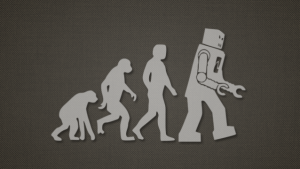The most common first reaction when contemplating immortality is, “It will never happen because we will overpopulate”.
This article proposes that the response should instead be, “Okay, then we need to make sure we are prepared for the increasing population”.
My argument will be made in response to the overpopulation argument. While I will be asserting the capability for humanity to overcome the overpopulation problem, I also want to make those problems clear – as it is only with sight of those problems that we can prepare to avoid them. Overpopulation is not merely an idle concern. To understand the concern and gain a full understanding of the opposing arguments, you can first read my prelude article – Immortality & Overpopulation: Explaining the Argument.
I’m being very optimistic about our future in this article, not due to ignorance in regard to the downsides of emerging technologies, but so I can explain what is possible if we focus on overcoming the problems. A lot might go wrong, but this is what will happen if a lot goes right.
Immortality will be accompanied by other amazing advances
 The assertion that immortality will cause overpopulation, is usually made with ignorance to the wider field of upcoming technological advances. It is only through the understanding of exponential growth that people are able to contemplate as reality the arguments that will be made in this article. People are failing to understand our potential for tackling overpopulation, because we traditionally have never needed to understand the exponential nature of technological advance. This is because technology has never before had any effect on the evolution of humanity.
The assertion that immortality will cause overpopulation, is usually made with ignorance to the wider field of upcoming technological advances. It is only through the understanding of exponential growth that people are able to contemplate as reality the arguments that will be made in this article. People are failing to understand our potential for tackling overpopulation, because we traditionally have never needed to understand the exponential nature of technological advance. This is because technology has never before had any effect on the evolution of humanity.
Now though, we are at the ‘knee of the curve’ in our exponentially advancing technological advances. The proposal is that now, technology is almost advanced enough to begin to merge with humanity. At which time, exponential growth will become obvious to us all – because we will not need to adapt to our environment; we will be adapting to suit the abilities of our technological capabilities. We will no longer be focused on merely surviving – we will be focused on evolving. This will be a ‘tipping point’ – a revolution – and possibly even the long theorised technological singularity.
The singularity will bring with it many revolutionary capabilities. Immortality will be a capability crowded among other revolutionary breakthroughs. While our argument does not require you to also believe in the idea of the singularity, is does require that you believe in the technological capabilities herein featured. If you believe that immortality could be possible in as little as 30 years, then we are off to a good start.
Defining Immortality
The thought that immortality gives you, is that of a body that is impervious to aging and damage. If an immortal person gets stabbed, you envision the wound instantly healing before your eyes. My use of the word ‘immortality’, refers to a body that is at least able to remain at an optimal cellular age of a 22 years old, indefinitely. The body would still be vulnerable to the normal damage that can harm us today – it would still need water and food.
However, immortality as definition will become increasing more complex as time progresses. The definition above is that of simple biological immortality. Eventually though, we will see the body enhanced through what many people call transhumanism, through radical improvements in nanotechnology. We will explain more about this, and other improvements to immortality, during the article.
Even without our achieving immortality, we are still set to face challenges due to population increases. Currently an estimated 7.2 billion people are alive – a number which has more than tripled in the past hundred years. Each year the population of the world has increased at an average of 1.8%. Meaning that this year it will increase by around 130 million people. It is estimated that per year, 56 million people are currently dieing.
If deaths per year happen to radically drop, then, judging by the current population trends, the challenges will become about 30% more problematic – and those challenges include:
Rise in Unemployment – An increasing population, means less availability of job, right? … No, wrong, very wrong; with a higher population, we have a greater demand for goods… meaning more jobs. More people = more jobs!!!! Let’s make that clear – nobody is coming to take your job!!! Okay, great. Advancing technologies will mean that the types of jobs available will change radically though over the next 30 years – people will be out of jobs, not because of population rises, but because technological advances will makes their jobs redundant.
Rising Energy demand – With consideration being given to our dwindling natural resources, this is certainly a legitimate challenge
Travel Congestion – Another credible challenge – well more of an annoyance, but definitely something that will need to be addressed.
Physical Living Space – This is a challenge that would be preceded by dwindling building resources. We have way more land to build on, and we can build upwards, and we can build cities on oceans – but only if we still have the resources to build with.
Water Shortage – We are already having enough trouble providing water, so increasing populations will be amplifying the problem. 780 million people around the world still do not have access to clean drinking water.
Food Shortage – Roughly 8.8 million people die each year due to starvation. What good is it to be able to rejuvenate our bodies, if we can still die of starvation?!
Should we Ban Immortality?
 I propose that there are upcoming solutions to all of the above challenges. It will be at least a decade though before the solutions begin to have an impact, and 30 years before they are proved as effective. So, suppose that there are surprise breakthroughs in extreme longevity / immortality within the next say 2 decades. The breakthroughs would come at a time when general populations and even governments are not sure if we will be able to cope with the resulting population increases. In such a situation, there would be a call to ban any research which aims to achieve immortality.
I propose that there are upcoming solutions to all of the above challenges. It will be at least a decade though before the solutions begin to have an impact, and 30 years before they are proved as effective. So, suppose that there are surprise breakthroughs in extreme longevity / immortality within the next say 2 decades. The breakthroughs would come at a time when general populations and even governments are not sure if we will be able to cope with the resulting population increases. In such a situation, there would be a call to ban any research which aims to achieve immortality.
Due to the already clear popularity of immortality, the result of an immortality ban would likely be mass civil unrest, global civil wars, and relentless terrorism. Personally I don’t see the ban as an option.
 I have heard calls for the banning of immortality, with the opinion displayed that immortality would be selfish and immoral. They believe that we should die to allow fresh new lives to take our place – to continue the natural cycle of life. I personally see the view as illogical traditionally conservative ignorance. It is given with the short sight of not understanding that the world as we know it can radically change for the better. We can all continue to live, while we use our experience to work on building the perfect world. Eventually we could solve population problems, and we will then be potentially bringing up our children in a world without wars, intolerance, and starvation – with everything we need provided, and only the aims of making it even better, of exploring our universe, and of discovering how/why it/we were created. Upcoming technologies will revolutionise everything conceivable, and then more – not only on this planet. Anything that we can create, should be thought of as natural. Achieving immortality should be thought of as curing our ailing bodies, and removing the dictatorship of death.
I have heard calls for the banning of immortality, with the opinion displayed that immortality would be selfish and immoral. They believe that we should die to allow fresh new lives to take our place – to continue the natural cycle of life. I personally see the view as illogical traditionally conservative ignorance. It is given with the short sight of not understanding that the world as we know it can radically change for the better. We can all continue to live, while we use our experience to work on building the perfect world. Eventually we could solve population problems, and we will then be potentially bringing up our children in a world without wars, intolerance, and starvation – with everything we need provided, and only the aims of making it even better, of exploring our universe, and of discovering how/why it/we were created. Upcoming technologies will revolutionise everything conceivable, and then more – not only on this planet. Anything that we can create, should be thought of as natural. Achieving immortality should be thought of as curing our ailing bodies, and removing the dictatorship of death.
Laws to Limit Births?
Another solution would be to produce laws to limit birth rates, a la China. It would however, not be ideal within a society which idealises its freedoms. With immortality being known as imminently possible, and there already being an overpopulation problem, people may decide by their own free will to delay plans to have children, until they know the world will be stable for their children. The better option would be to allow people to decide this for themselves. If we do limit birth rates, it would not be needed forever. The explanation for this is equal to the explanation for why we will likely not even need to limit birth rates in the first place…
Why we will not Overpopulate
And just when you thought it would never happen – we get to the point: Below, I will run through the technologies/revolutions, that are set to help us sustain a naturally increasing population.
Renewable Energy Improvements (Nanotechnology)
It is vital that we secure adequate energy resources in the coming decades.
 Firstly, fusion power! This is described as the ‘sun in a bottle’. It is the next generation of nuclear power – except it will be far safer, and won’t produce nuclear waste. The first demonstration fusion power plant is set to start operating in the 2030s. An experimental reactor called Iter is currently under construction in France and is due to start operation in 2020.
Firstly, fusion power! This is described as the ‘sun in a bottle’. It is the next generation of nuclear power – except it will be far safer, and won’t produce nuclear waste. The first demonstration fusion power plant is set to start operating in the 2030s. An experimental reactor called Iter is currently under construction in France and is due to start operation in 2020.
 Radical improvements to solar cell technology is expected in the coming decades. Some information to give you an idea of the upcoming improvements in solar panels:
Radical improvements to solar cell technology is expected in the coming decades. Some information to give you an idea of the upcoming improvements in solar panels:
The best solar panels currently available for general domestic use (at a reasonable price) operate at an efficiency of around 13-20%. We have seen recent breakthroughs that push the efficiency of solar panels to 44.7 – although currently the tech is too expensive and difficult to build, for mass market. Huge price drops will come with advances in nanotechnology – creating thinner panels, with easier methods of manufacture.
Nanotechnology will provide major advances in solar panels over the next few decades; examples can be found in articles about quantum dots (allowing windows to double as solar panels), nanowires (boosting efficiency), and graphene. Studies have suggested that graphene could eventually be utilised to make them, pound for pound, up to 1,000 times more powerful than current conventional solar cells. Find out more about nanotech in solar cells, here.
 Plans are also being developed for orbital solar power. This will use huge solar power stations in space, to beam energy back to earth via microwaves (able to travel through clouds unhindered) or laser beams. Japan is currently leading the research and development, inspired following the Fukushima Meltdown. It could be commercially feasible by 2040. They could collect energy 24 hours per day, and will do so 144% more efficiently than on land.
Plans are also being developed for orbital solar power. This will use huge solar power stations in space, to beam energy back to earth via microwaves (able to travel through clouds unhindered) or laser beams. Japan is currently leading the research and development, inspired following the Fukushima Meltdown. It could be commercially feasible by 2040. They could collect energy 24 hours per day, and will do so 144% more efficiently than on land.
Battery Power Improvements (Nanotechnology)
 The benefits of enhancements in solar power, will also require massive improvements in battery technology, for us to reap the maximum benefits. Again, this will come thanks to the nanotechnology revolution. A whole list of breakthroughs have recently been made in battery tech – you can see 10 of them in this article about battery breakthroughs for smartphones and wearable tech. We have an article here about technology that will likely make batteries 30x more powerful within the decade. Optimistically, the said battery could be commercially viable as soon as 2015 – smartphones will be charged from empty in under 15 minutes, with a single charge lasting up to a week. This alone will bring closer to reality the dream for battery powered cars.
The benefits of enhancements in solar power, will also require massive improvements in battery technology, for us to reap the maximum benefits. Again, this will come thanks to the nanotechnology revolution. A whole list of breakthroughs have recently been made in battery tech – you can see 10 of them in this article about battery breakthroughs for smartphones and wearable tech. We have an article here about technology that will likely make batteries 30x more powerful within the decade. Optimistically, the said battery could be commercially viable as soon as 2015 – smartphones will be charged from empty in under 15 minutes, with a single charge lasting up to a week. This alone will bring closer to reality the dream for battery powered cars.
Water Supply Improvements (Nanotechnology)
 Water supply is urgently in need of massive improvement, specifically in the upstream regions of Africa, Asia and the Middle East. Nanotechnology breakthroughs have already given us the ability to efficiently and cheaply desalinate water. The current most feasible technology is patented as Lockheed Martin’s Perforene™ Membrane. The perforene membranes are made of graphene (sheets of pure carbon, only one atom thick). It will require approximately 100 times less energy than other membranes. Find out more here. What we are waiting on to allow the tech to be rolled out, is the perfection of mass production methods for graphene.
Water supply is urgently in need of massive improvement, specifically in the upstream regions of Africa, Asia and the Middle East. Nanotechnology breakthroughs have already given us the ability to efficiently and cheaply desalinate water. The current most feasible technology is patented as Lockheed Martin’s Perforene™ Membrane. The perforene membranes are made of graphene (sheets of pure carbon, only one atom thick). It will require approximately 100 times less energy than other membranes. Find out more here. What we are waiting on to allow the tech to be rolled out, is the perfection of mass production methods for graphene.
Smart Cities (Big Data & Internet of Things)
 There are many designs for the next generation of city – the smart city, or city 2.0. The designing of the city is no longer only in the hands of the architects – instead it is being designed from the inside out, with revolutionary technologies. The focus is on evolving the world to suit its growing population. From the information available, it seems we are heading in the right direction, and more importantly, at the right pace – evidence for this point is provided brilliantly in an article from the Guardian, ‘City Design: Transforming Tomorrow’.
There are many designs for the next generation of city – the smart city, or city 2.0. The designing of the city is no longer only in the hands of the architects – instead it is being designed from the inside out, with revolutionary technologies. The focus is on evolving the world to suit its growing population. From the information available, it seems we are heading in the right direction, and more importantly, at the right pace – evidence for this point is provided brilliantly in an article from the Guardian, ‘City Design: Transforming Tomorrow’.
The technological revolutions at the heart of the designs, are both the ever amalgamating Big Data, and its soon-to-be augmentee, the Internet of Things (IoT). With these technologies at the heart, we will transform our cities progressively from the inside out, with the use of all the emerging technologies featured in this article.
Food Revolution (3D-Printing, Nanotechnology & Biofabrication)
 Amongst these designs we often find ideas for so-called food towers, or vertical farms, proclaimed the farms of the future (pictured on the right). As our population begins to push the limits of the vegetation the land can provide, these towers will eventually be vital if we want to continue to eat fresh fruit and veg, at a reasonable price. Also, they will free up space for livestock. These towers would even be practical in the current desolate desert locations in Africa. Find out more about vertical farming.
Amongst these designs we often find ideas for so-called food towers, or vertical farms, proclaimed the farms of the future (pictured on the right). As our population begins to push the limits of the vegetation the land can provide, these towers will eventually be vital if we want to continue to eat fresh fruit and veg, at a reasonable price. Also, they will free up space for livestock. These towers would even be practical in the current desolate desert locations in Africa. Find out more about vertical farming.
3D printing and nanotechnology are also set to give a helping hand. They will produce nutrient-rich tastier foods that can be produced locally and on-demand, reducing food waste, while also being preserved in a much better and safer way. Within the foreseeable future though, this won’t be the golden bullet for food security – the food coming out of the printers, still has to be put in.
Further advances though will see the perfection of 3D printed meat. Eliminating our need kill animals. Not just for ethical reasons, without our dependence on farming animals, we will be free from having to maintain a constant herd of 100 billion animals by 2050. The TED video below explains this future brilliantly. It is a 9 minute must watch.
Artificial Intelligence
 All of the above solutions are all well and good, but what about when we run out of resources? Perhaps a reasonable year to put on the reaching of this limit is 2300. But perhaps sooner than that, we will come to a point when we want to leave areas of the planet to be free of humanities upheaval – where other animals are free to run wild and continue on their own evolutionary path. Perhaps we will just want to do it for the sake of nostalgia and respect for the planet that created us. We would be then looking for ways to continue our natural population increase, while also preserving the non-technological beauty of our planet.
All of the above solutions are all well and good, but what about when we run out of resources? Perhaps a reasonable year to put on the reaching of this limit is 2300. But perhaps sooner than that, we will come to a point when we want to leave areas of the planet to be free of humanities upheaval – where other animals are free to run wild and continue on their own evolutionary path. Perhaps we will just want to do it for the sake of nostalgia and respect for the planet that created us. We would be then looking for ways to continue our natural population increase, while also preserving the non-technological beauty of our planet.

Now this is where things get interesting, but for some perhaps too ‘far out there’. What I will explain now is the potential for AI to lead us out of our current resource demanding physical forms – and in as little as 30 years.
Artificial intelligence is assessed as capable of becoming self-aware by the 2040’s. At which time, through advances in quantum computing, the AI will be capable of being billions of times more powerful than the human mind. The result of this breakthrough, as described above, is referred to as the singularity – an intelligence explosion that will have an incomprehensible revolutionary effect on humanity (assuming of course that we make safe AI that does not produce the terminator scenario). A detailed explanation of the ideas surrounding the singularity can be found on Ray Kurzweil’s website.
Virtual Reality & Cyborgs/Avatars
 Post singularity possibilities include the ability to upload the human mind to a computer. Having a computer scan my brain and upload the information to a new storage medium, seems no more different to me than copying: Imagine staying awake throughout the process, and being able to talk to the upload – you would say, “you’re not me, I’m me!”; just because the upload would say the same thing, doesn’t make it the same, it makes it also you.
Post singularity possibilities include the ability to upload the human mind to a computer. Having a computer scan my brain and upload the information to a new storage medium, seems no more different to me than copying: Imagine staying awake throughout the process, and being able to talk to the upload – you would say, “you’re not me, I’m me!”; just because the upload would say the same thing, doesn’t make it the same, it makes it also you.
So although mind uploading is the popular phrase to describe our transcendence from our bodies – it is hard to see everybody signing up to that method of transcendence. Perhaps the better option is to keep ourselves operating from our own little old brains, while ‘plugging in’ to an internet type of connectivity, where we could have access to an augmenting ‘artificial brian power’ to increase our intelligence. Now, the possibilities with this ability are incredible, and hard to wrap your head around.
You could remain within your body, but augment your consciousness elsewhere. For instance, you could then exist in a virtual reality environment (VRE). In the VRE anything programmed would be possible – you could fly, and it would feel as if it was real. Or you could instead exist in the real world, in an avatar built for deep sea survivability, or built with wings and able to fly.
 Back to the subject of overpopulation: For those willing, it would be possible to detach those brains from their bodies, suspending the need to sustain the persons bodies. We could preserve the bodies for future use if we liked. We could then move our minds into new artificial forms of human body, enhanced with the ability to live on only electricity, instead of food and even water. Of course we will still need some kind of ability to have children – our dna would be needed, at least. Sex though – please say we can to keep that around. Avatars could be built to make sex better, I’ll let you create your own ideas on that one. It’s difficult to imagine a life without the need to eat or sleep though- would we get bored? Well if we do, we can just decide to sleep for a while, until a point in the future when even more interesting things become possible.
Back to the subject of overpopulation: For those willing, it would be possible to detach those brains from their bodies, suspending the need to sustain the persons bodies. We could preserve the bodies for future use if we liked. We could then move our minds into new artificial forms of human body, enhanced with the ability to live on only electricity, instead of food and even water. Of course we will still need some kind of ability to have children – our dna would be needed, at least. Sex though – please say we can to keep that around. Avatars could be built to make sex better, I’ll let you create your own ideas on that one. It’s difficult to imagine a life without the need to eat or sleep though- would we get bored? Well if we do, we can just decide to sleep for a while, until a point in the future when even more interesting things become possible.
You see the possibilities that can be imagined in a world of immortality and artificial intelligence? It is hard to stay on one topic long enough before jumping to another insanely awesome possibility – all while stumbling back into more reasons why our technologies will prevent us from ever overpopulating.
Space Colonisation
 The ultimate overpopulation cure. Take all of what is possible above and use it for space travel. Risky, but for those who think they will get bored living an immortal life – how about the option to explore the universe with the possibility of finding alien life? Or set sale to a habitable planet, with your preserved immortal human bodies to set up Earth 2? It won’t be as fun as Earth 1 for a long while though. So maybe you wouldn’t tell your children there that you came from a much more advanced planet, because it is something that they would not be able to comprehend, for they would be in the stone ages and think of electricity as magic worthy of worship. If you taught them about Earth 1, and they could comprehend it, they would demand to return and hate you for bringing them to a baran empty planet. Along that line of thinking, we could say that we could already be living on Earth 2? Who knows for sure? It may be improbable, but the point of explaining this, is to reinforce the message that possibilities are incredibly abundant and complex. For more information, read our article, ‘Space Colonisation: Almost Ready to Lift Off‘.
The ultimate overpopulation cure. Take all of what is possible above and use it for space travel. Risky, but for those who think they will get bored living an immortal life – how about the option to explore the universe with the possibility of finding alien life? Or set sale to a habitable planet, with your preserved immortal human bodies to set up Earth 2? It won’t be as fun as Earth 1 for a long while though. So maybe you wouldn’t tell your children there that you came from a much more advanced planet, because it is something that they would not be able to comprehend, for they would be in the stone ages and think of electricity as magic worthy of worship. If you taught them about Earth 1, and they could comprehend it, they would demand to return and hate you for bringing them to a baran empty planet. Along that line of thinking, we could say that we could already be living on Earth 2? Who knows for sure? It may be improbable, but the point of explaining this, is to reinforce the message that possibilities are incredibly abundant and complex. For more information, read our article, ‘Space Colonisation: Almost Ready to Lift Off‘.
 Conclusion
Conclusion
We should embrace possibility and embrace the potential of our evolution – it could lead to us finding our creators (if we have creators); it could lead to us becoming the creators of a whole universe of intelligent life. If we fight against natural evolution – against immortality – all we are doing is fighting against each other – because there will always be people who want to live forever. This applies also for other technological advances, such as the possibility of sentient AI.
We need to unite and roll with the natural progression of ourselves and our technologies, if not only for the sake of that progression, then for the sake of security. We already have enough conflict among religious, nationalist and economic ideologies. If we add a whole new set of conflicts then our communities will be split from the insides out. Instead, we should focus on working together to evolve ourselves with technology – and to do that while securing against our emerging tech being involved in catastrophic accidents (the terminator scenario), or criminal/terrorism use.  Doing this, will give us a common goal, and help us overcome our traditional ideological conflicts.
Doing this, will give us a common goal, and help us overcome our traditional ideological conflicts.
A future can be foreseen, where natural population growths are sustained, even with the advent of immortality. All it takes is the will of humanity to keep pace with the required sustainability demands. Embracing the challenge, I believe, is the only route to our technological salvation, over otherwise likely desolation.




